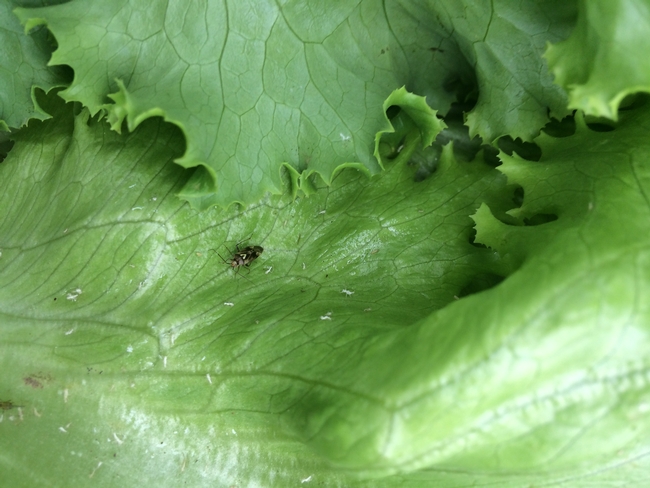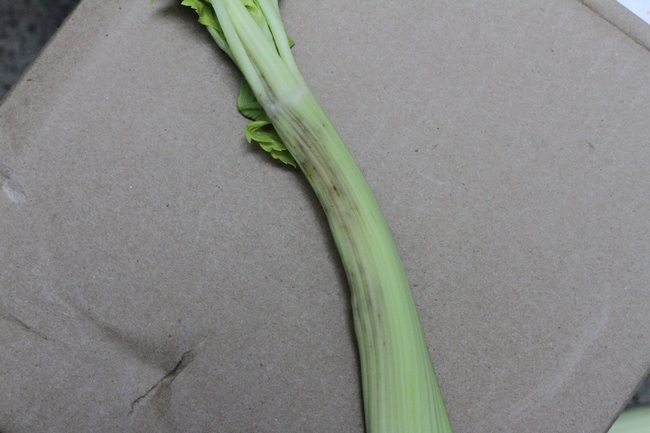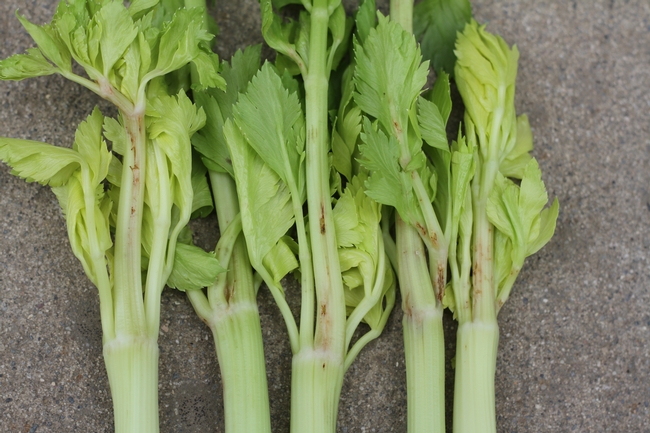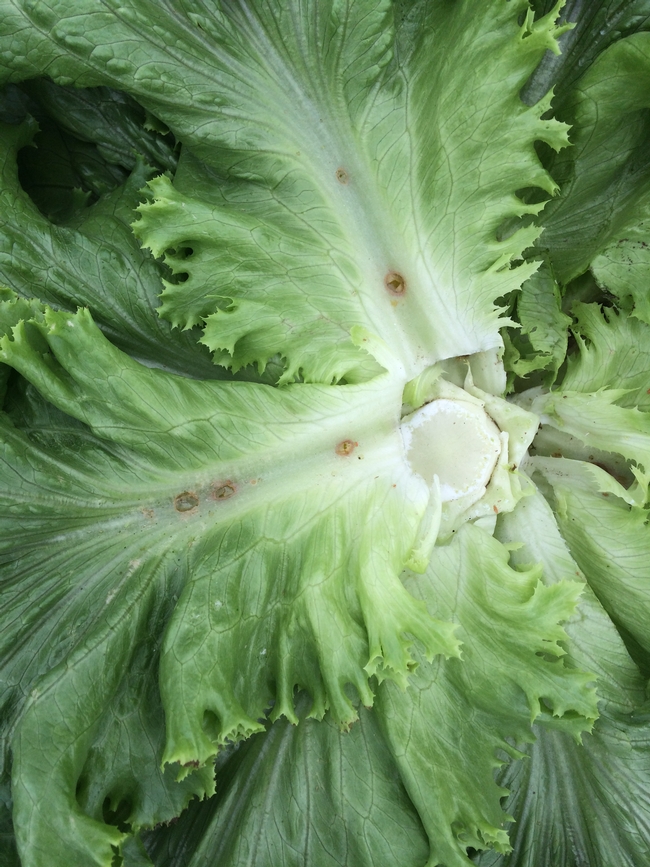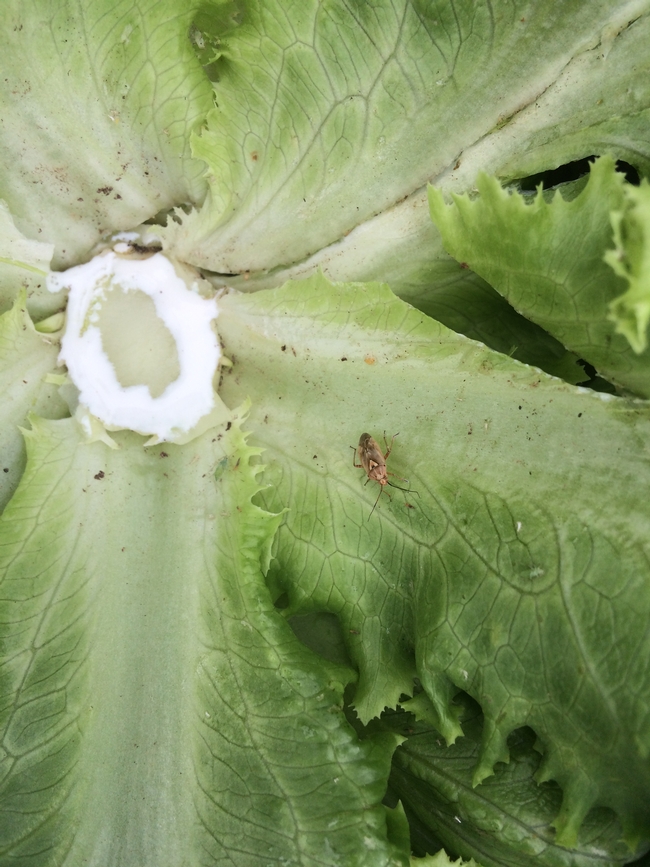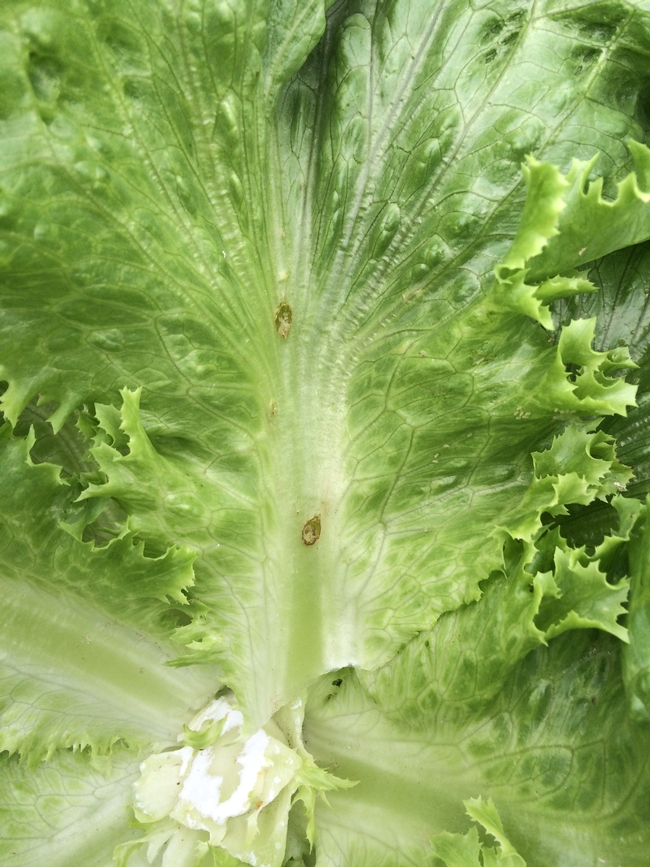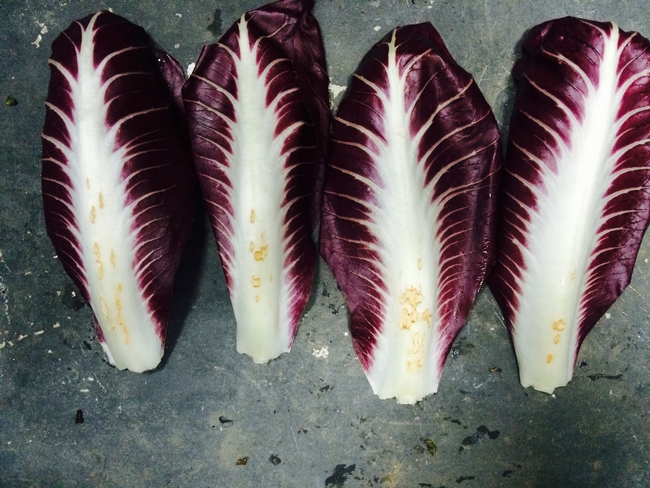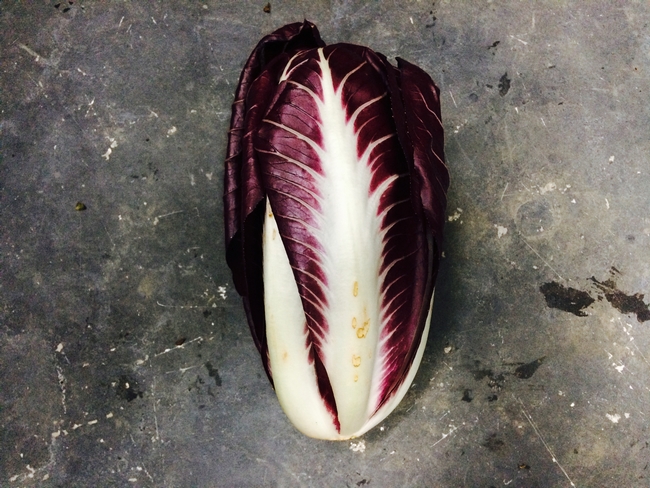Lygus bug (Lygus herperus) (Figure 1), usually a sporadic pest on vegetable crops, is now a major pest of several vegetables this year especially on celery, lettuce, and radicchio in the Salinas Valley.
On celery, the feeding injury appears as lesions toward the base of the mature stock and young foliage in the center (Figure 2-3). On lettuce and radicchio, lygus bug feeding injury appears toward the bottom mid-rib area of the leaf (Figures 4-8).
Lygus bugs are highly mobile meaning they can move from field to field until they find a resourceful food source. Perhaps, lettuce and celery are not the nutrient rich diet to lygus bugs but these crops could provide much needed moisture and refuge. High populations of lygus bug could develop on weed hosts in the unmanaged areas such as ditches, side of the roadways etc. Also, alfalfa or beans could serve as hosts. When weed plants dry out or mowed, lygus bug adults tend to leave those hosts seeking food and water elsewhere and even seek temporary refuge in the lettuce or celery fields. Those female lygus bugs settled in the vegetables not only cause feeding injury but also lay eggs. A lygus bug female can lay on average 150 eggs for its life time in an ideal laboratory conditions. This suggests that a few lygus bug females settled in lettuce or celery can develop into colonies. Any disturbance to the favorable hosts such as mowing the weeds in the unmanaged areas or mass cutting of alfalfa could trigger lygus bug adult movement. It is important that alfalfa growers pay attention when they cut the alfalfa crop. Sequential or staggered alfalfa cutting is advisable because any area wide cutting will disturb them and will cause lygus bug adults flee the alfalfa field. Maintaining the alfalfa crop succulent with adequate water and fertilizer is advisable.
Management of lygus bug involves repeated use of insecticides particularly pyrethroid insecticides and Lannate (methomyl). Among those registered insecticides on celery such as Vydate (oxamyl) and Malathion have comparatively longer pre-harvest intervals (PHIs) than pyrethroid insecticides; thus, they are used during the early phase of the plant development. Among the pyrethroid insecticides registered on vegetables, Mustang (zeta-cypermethrin), permethrins and lambda-cyhalothrin (Warrior II) are widely used. Growers restrain from using Mustang because of maximum residue level (MRLs) restrictions imposed by certain export markets. There are several generics of pyrethroid insecticides available in the market. Repeated use or exposing pyrethroid insecticides to same generation of lygus bugs may lead to insecticide resistant lygus bug populations. Lack of insecticide coverage could also result in ineffective spray results. As indicated earlier, lygus bug adults are highly mobile and they could move as the spray equipment approaches. If nymphs exist in the field, they could easily hide in the crown areas of the plant. This suggests that there could be several reasons behind inadequate control of lygus bug. Monitoring the field is critical to reduce the establishment of lygus bug colony in the field for timely management.
